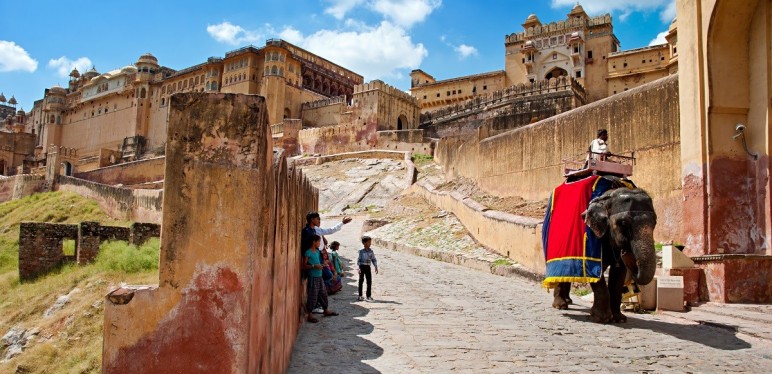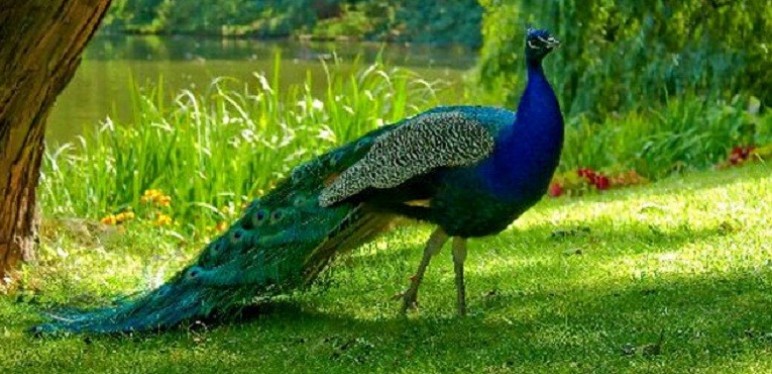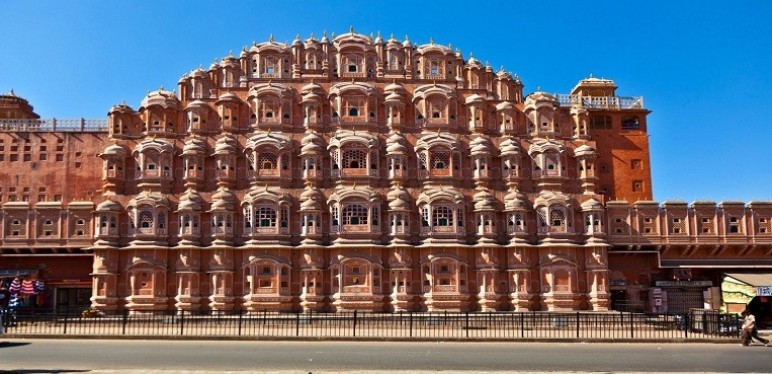Full Overview :
Day 1
Delhi to Mandawa
Early morning pick up from Your hotel and driver to Mandawa (275) km and 6 Hrs drive. On arrival at Mandawa explore Dundlod village.
Day 2 Mandawa Fort visit
The village of Dundlod lies in the heart of Shekhawati. The family of Dundlod are the descendants of Kesari Singh, the fifth son of Sardhul Singh. Dhndlod castle was built by him in 1750 A.D. after having travelled through sandy track of Shekhawati, one enters the village of Dndlod, to see the magnificent sight of the beautifully painted havelis of the Goenkas and the towering fort which stands in the middle of the village stability and rise of the new merchant class the Marwaries. The Shekhawati Marwaries were known to trade in quality at very low mark ups, however it added to the volumes and obviously their profits rose. Gigantic mansions or havelis are testimony to the business acumen of a community that was always able y its timely moves, to amass substantial fortunes. Even when the trade rivalry with the British had pushed the Marwaris from Shehawati to the port towns of Calcutta and Bombay, they never cease to think of Shekhawati as their home land. And this explains the enormous structures raised in nostalgia with nouveau riche pride.
After lunch drive Nawalgarh to Jaipur (150) km 3 Hours drive.
Day 3 Jaipur City Tour
Elephant ride from the foothills of the aravallis to the fort entrance. Amber fort : at the distance of 11 km from the city, Amber was the ancient capital of Jaipur state. Constructions of the fort began in 1592 by Raja Man Singh, the Rajput commander of the Akbar’s Army and is a superb example of Rajput architecture. It was commenced by Raja Man singh in 1600 AD and then completed by Sawai Jai Singh in the 18th century. The fort is an example of fascinating blend of Hindu and Muslim architecture built in red sandstone and white mar le. The highlight of the fort is the Sheesh Mahal a place known for its craftsmanship in mirrors. Gardens like Dilaram Garden and Mohan Bar, which draw a leaf from the gardens that Mughlas laid, are also sights to behold. An elegant temple of Shila Mata is situated inside the palace complex. The image of the Mother Goddess worship;;ed with reverence by thousands of devotees every day was brought from Jessore in Lower Bengal (Now in Bangladesh) by Raja Man Singh and installed here. Afternoon, city Tour visit the City Palace which has museum having an extensive collection of art, carpets, enamel were and weapons; Jantar Mantar the observatory built by Maharaja Jai Singh in 1728 and the façade of Hawa Mahal. Overnight stay at Jaipur.
Day 4
Jaipur to Agra
After breakfast drive to Jaipur to Agra 250 km. and 5 hrs. drive en-route visit Fatehpur Sikri.
Fatehpur Sikri: the deserted, red sandstone City, Emperor Akbar built that as his capital and palace in the late 16th century is an exhilarating experience. It as veritable fairytale city and its ruins are in pristine condition. It is not hard to imagine what the court life must have been like in the days of its grandeur. Also visit the Buland Darwaza, the largest gateway in the world, continue drive to Agra overnight stay in Agra.
Day 5
Agra City Tour
Taj Mahal- little needs to be said about this architectural wonder, which is always the souls raison-de-etre for every tourist’s visit to Agra. Built by Shah Jahan, the Taj is a white marble memorial to his beautiful wife Mumtaz Mahal. This monument took 22 years to be completed and was designed, and planned by Persian architect ustad Isa. Apart from its stunning design balance and perfect symmetry, the Taj is also noted particularly for its elegant domes, intricately carved screens and some of the best inlay work ever seen.
Note- Taj Mahal close on Friday
Itmad –Ud-Daula
It is the first tomb in India built entirely with white marble. It was built in 1628 by Nurjahan, wife of emperor Jahangir, for his father Mirza Ghiyas Beg, an Imperial officer who had received the title of Itmad-Jud-Daula from Emperor Jahangir.
Overnigt stay in Agra.
Day 6: Agra to Delhi by Road 240 km 4 Hour drive.





